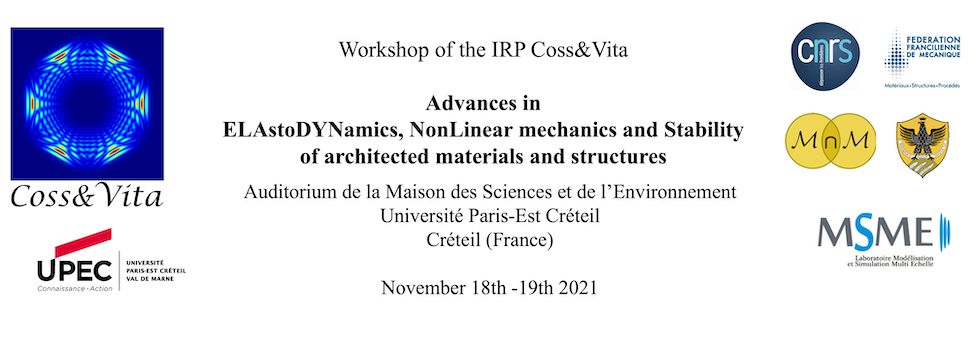This paper highlights the main acoustic characteristics of permeo-elastic media. These porous media consist of a rigid porous skeleton on which are fixed highly flexible elastic films that interact with the fluid saturating the pores [1, 2]. They may correspond, for example, to foams, with the thin membranes acting as films and the rigid structure being formed by their thicker struts.
Permeo-elastic media are characterised by the fluid/film interaction at the pore scale which, compared to conventional porous media, enriches the flow physics with an elastic component. Consequently, the acoustic characteristics of permeo-elastic media can deviate considerably from those of conventional porous media due to the interaction of the elastic and kinetic energy of the films with the viscous and kinetic energy of the fluid, [1, 2].
The theoretical description is established by the two-scale asymptotic homogenization method. The resulting effective behaviour takes into account membrane and/or bending effects at the pore scale in the films. It is shown that the film effects depend strongly on whether the pores or membranes are partially or fully connected. Hence, different wave propagation regimes are identified according to the nature of the local flow. In details, we successively examine the cases of permeo-elastic materials with pores that are: :
- Fully connected, i.e. no pores are closed by the films.
- Unconnected, i.e. all pores are closed by films,
- Partially connected, i.e. some pores are closed by the films.
In these different cases, a mapping of the effective behaviour is established as a function of two characteristic frequencies associated with visco-inertial and visco-elastic effects. It reveals under which conditions a fluid-film interaction phenomenon appears at the pore scale and signif- icantly influences the macroscopic acoustic behaviour. In particular, it is shown that, depending on the morphology, the conductivity or the compressibility (or both) can present singularities at specific frequencies due to local internal resonance or anti-resonance phenomena. This induces frequency bands of ”anomalous” effective sound velocity. Finite element calculations and lab- oratory experiments [1] have confirmed these phenomena.
References
-
[1] R. Venegas, C. Boutin, Acoustics of permeo-elastic materials, J. Fluid Mech. (2017)
-
[2] C. Boutin, R. Venegas, Pore-scale bending and membrane effects in permeo-elastic media, Mech. of Mat. (2020)
- Poster

 PDF version
PDF version
